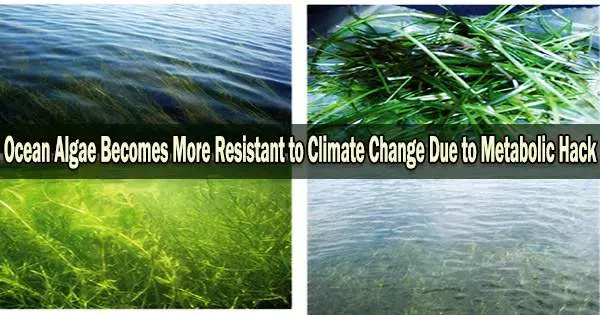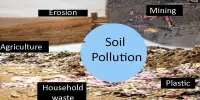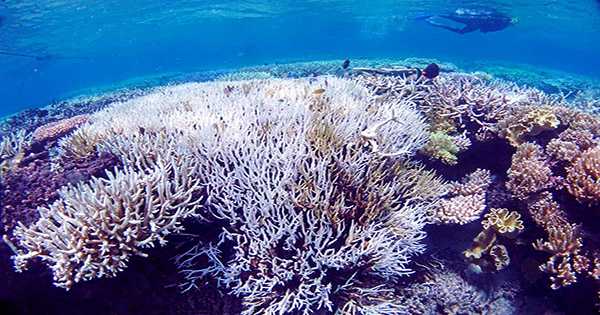An international team of scientists’ study, which was published in Science Advances, presents convincing evidence that marine phytoplankton is far more adaptable to future climate change than previously believed.
The scientists discovered that a mechanism known as nutrient uptake plasticity allows marine algae to adapt and cope with nutrient-poor ocean conditions anticipated over the next decades as a result of global warming of the upper ocean. They did this by combining data from the long-term Hawai’i Ocean Time-series program with new climate model simulations carried out on one of South Korea’s fastest supercomputers.
The foundation of the marine food web is made up of phytoplankton, which are microscopic algae that float at the ocean’s surface. These algae absorb nutrients (such as phosphate and nitrate), dissolved carbon dioxide, and oxygen while photosynthesizing, producing around 50% of the oxygen we breathe.
Understanding how marine algae will react to global warming and the resulting reduction in nitrogen levels in upper ocean waters is essential for determining whether or not our planet will be habitable in the long run.
It is extremely difficult to predict how the yearly phytoplankton production rate will evolve globally over the next 80 years. According to the Intergovernmental Panel on Climate Change’s (IPCC) most recent assessment, there is ambiguity on whether phytoplankton will increase or decrease in the future, ranging from -20% to +20%.
The ocean’s surface layers are more impacted by global warming than its deeper layers. Because warmer water is lighter, the upper ocean will eventually become more stratified, which will lessen the mixing of nutrients from the subsurface into the layer that receives sunlight, where phytoplankton live.
Future Earth system models need to use improved observationally-based representations of how phytoplankton respond to multiple stressors, including warming and ocean acidification. This is necessary to predict the future of marine life on our planet.
Prof. Axel Timmermann
According to earlier research, the anticipated future depletion of nutrients at the surface would cause a significant decrease in the production of phytoplankton in the ocean, which might have widespread and potentially disastrous repercussions on marine ecosystems and the climate.
But according to a new study in Science Advances, this may not happen. New analyses of the upper ocean phytoplankton data from Hawai’i Ocean Time-series program shows that productivity can be sustained, even in very nutrient-depleted conditions.
“Under such conditions individual phytoplankton cells can substitute phosphorus with sulfur. On a community level, one might see further shifts towards taxa that require less phosphorus,” says David Karl, a coauthor of the study, Professor in Oceanography at the University of Hawai’i and co-founder of the Hawai’i Ocean Time-series Study program, to illustrate the concept of phytoplankton plasticity.
Algae in subtropical locations, where nutrient concentrations in surface waters are low, take up less phosphorus per amount of carbon stored in their cells than on average worldwide, which is another evidence for adaptability.
The researchers used its supercomputer Aleph to run a series of climate model simulations with the Community Earth System model (version 2, CESM2) to examine how this special metabolic “hack” may affect global ocean productivity over the following few decades.
The scientists were able to qualitatively replicate earlier model results of a drop in global production of roughly 8% by turning off the phytoplankton plasticity in their model.
However, the computer simulation shows an increase in worldwide production of up to 5% till the end of this century when the plasticity parameter in their model is turned on in a way that captures the observations made close to Hawai’i for the previous three decades.
“Regionally, however, these future productivity differences can be much higher, reaching up to 200% in subtropical regions,” says Dr. Eun Young Kwon, first author of the study and a researcher at the IBS Center for Climate Physics at Pusan National University, South Korea.
The ocean may absorb more carbon dioxide from the atmosphere and eventually store it below the ocean’s surface thanks to this increase in productivity.
The authors looked at 10 additional climate models whose data were used in the most recent IPCC 6th Assessment Report after being motivated by the outcomes of their sensitivity computer model simulations. The results confirmed the author’s initial conclusions.
“Models without plasticity tend to project overall declining primary production for the 21st century, whereas those that account for the capability of phytoplankton to adapt to low nutrient conditions show on average increasing global productivity,” says Dr. M.G. Sreeush, co-corresponding author of the study and a postdoctoral fellow at the IBS Center for Climate Physics.
“Even though our study demonstrates the importance of biological buffering of global-scale ecological changes, this does not imply that phytoplankton are immune to human induced climate change. For instance, worsening ocean acidification will reduce the calcification rates of certain types of phytoplankton, which can lead to large-scale shifts in ecosystems,” warns Dr. Eun Young Kwon. These factors are neither well understood nor represented yet in climate models.
“Future Earth system models need to use improved observationally-based representations of how phytoplankton respond to multiple stressors, including warming and ocean acidification. This is necessary to predict the future of marine life on our planet,” says Prof. Axel Timmermann, a coauthor of this study and director of the IBS Center for Climate Physics.
















